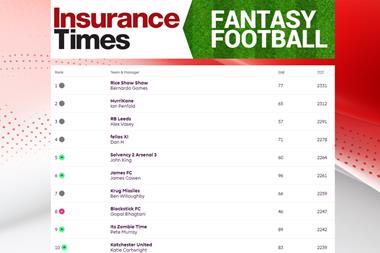Broker chief executive calls out the disconnect between price and value in insurance and urges insurers to instead offer ‘a genuinely all-embracing contract’
Industry thought leaders have identified “hollowing out” as “a massive problem” for the insurance sector amid discussions of an industry-wide disconnect between the price and value of insurance products.
Commentators on this issue include Aston Lark group chief executive Peter Blanc, who was speaking at the Chartered Insurance Institute’s ‘Transparency and Insurance: What can be done to close the expectation gap?’ webinar on 20 January.
Blanc and his fellow panellists – Graham Trudgill, executive director of Biba, and James Daley, managing director of Fairer Finance – are all members of the professional body’s Chartered Transparency Forum.
Explaining the problem and how it links to the expectation gap – where customers and insurers have different perceptions on the level of insurance cover purchased – Blanc said: “Part of why we’re here is because of the problem between price and value in insurance, the fact that people purchase a product and they don’t appreciate its value because most people buy a product expecting never to claim.
“When insurance companies and brokers, I think we’re all guilty of this, when we’ve been trying to promote products and increase sales, an easy way to increase sales is to reduce price. And how do you reduce price? Well, you reduce price by reducing cover and of course the majority of customers don’t necessarily realise that there is a difference between products.”
‘Dumbing down’ cover
Blanc added that this strategy could, in fact, lead to the “dumbing down” of insurance products, with the quality of cover becoming a mere “afterthought”.

He continued: “I think market forces, particularly in some classes of business, have become so prevalent that actually, it becomes just a price battle and the cover is an afterthought.
“People get away with, frankly, providing the minimum level of cover that they have to provide in order to get their Defaqto rating. But fundamentally, what started out as a great idea ends up being dumbed down into a not particularly good product.”
This is where the need for greater transparency in insurance becomes apparent, Blanc added, to ensure customers fully understand the depth of cover they are paying for.
“We’ve got to make sure that all of our products truly explain whether they are a fantastic product that genuinely includes all sorts of bells and whistles, or if they are a value product and I do get that some people do literally just want catastrophe, battleship type cover – if that’s what you’re providing, we’ve got to be crystal clear in our terminology language that you’re buying a battleship cover,” he said.
Fit for purpose?
To create greater cohesion between insurance’s price and value juggling balls, Blanc recommended a return to quality, all-inclusive coverage.
He said: “Personally, I would like all insurers to actually have an offering whereby customers can purchase a genuinely all-embracing contract.
“Let’s start trying to bring in the upper end of the spectrum again rather than just a continual drive to hollow out.
“We wouldn’t have to worry quite so much about the disclosure and the reading age if we knew that the products were fundamentally, truly fit for purpose. Then, a lot of the transparency problems do tend to go away.”
Fairer Finance’s Daley agreed with Blanc’s sentiments. He responded: “I’d love that to be the world that we lived in. Unfortunately, I don’t think it’s going to be, particularly in the retail market where people are very price sensitive. Hollowing out is a massive problem.”
The webinar was chaired by Melissa Collett, the CII’s professional standards director.













































No comments yet